Disclosure: This post may contain affiliate links (marked with *). If you click on these links and make a purchase, I may earn a small commission.
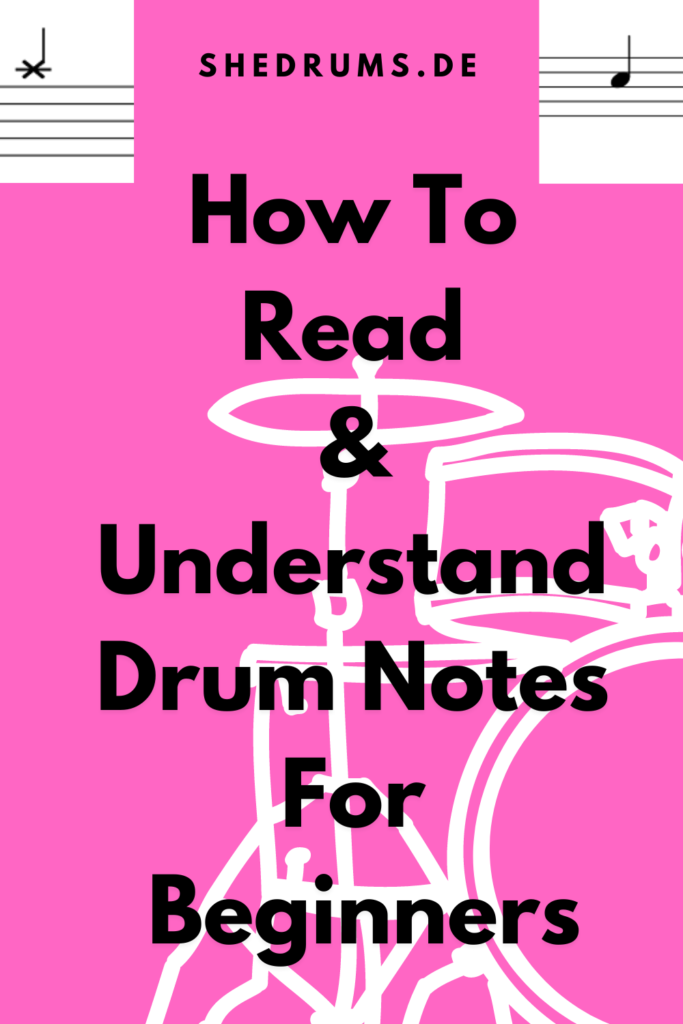
Are drum notes for beginners hard to learn?
How do they look like?
And what else should you know about drums sheet music?
In this guide, you’ll learn how to easily read & understand drum notes.
We’ll have a look at the notation for a standard drum kit, including the
- bass drum or kick,
- snare drum,
- toms
as well as the
- hi-hat,
- crash
- and ride
cymbals.
The Many Looks Of Drum Notes
Drum notes look slightly different depending on the
- book,
- author and
- notation program
used.
Basically, there is no official rule of how drum notes have to look like.
For this reason, I’ll show you how to learn and understand my preferred drum notes in this guide.
I use MuseScore for writing my
- drum grooves,
- fills and other
- exercises
- etc.
down.
MuseScore is free to use, maybe you want to give it a try as well.
Drum Notes For Beginners: Chart With The Basics
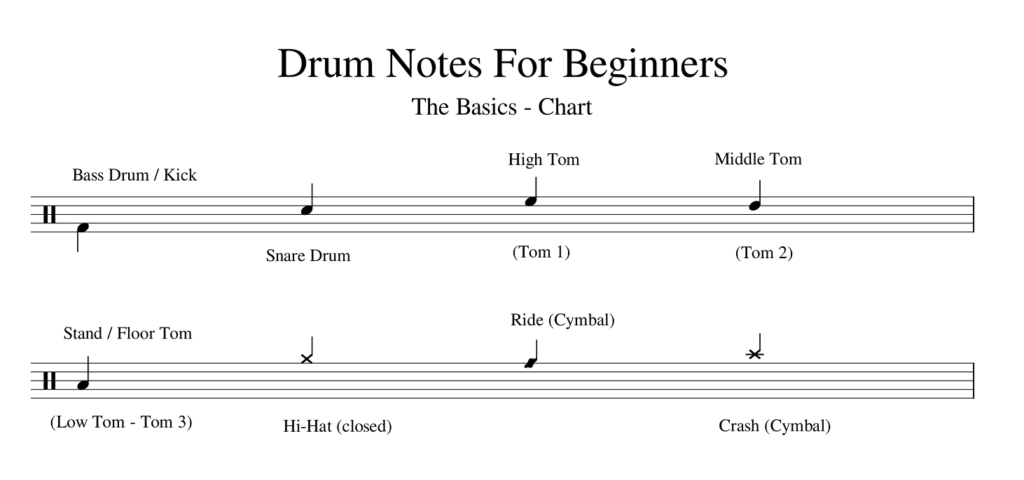
As you can see, we have different symbols for each instrument of the drum set.
You place them into a 5-line system or staff, using the percussion key.
For better understanding, let’s set each note in relation to its tone height.
We’ll start with the deepest sounding instrument of the beginners’ drum set, the bass drum or kick.
The Bass Drum Or Kick
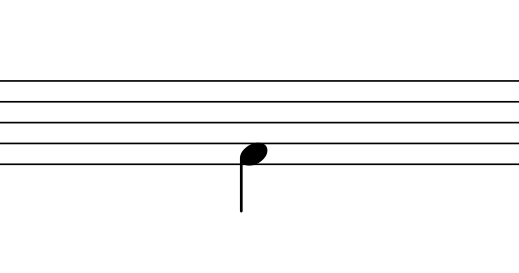
The kick or bass drum is our lowest sounding instrument on the drum set.
For this reason, you can place it into the blank space at the bottom of the staff.
If you play double bass pedals, the note for your second foot can also be written
- directly on or
- right under the last line of the staff.
However, it’s also possible to directly place it into the same space as the first bass drum.
The Snare Drum
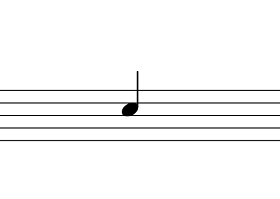
The snare drum is known as the center or heart of the drum kit.
Consequently, you place it right above the middle of our notation system.
So, snare notes are written in the second blank space from above the staff.
Sometimes, however, they are written directly on its third line.
The High, Middle & Low (Sounding) Toms
A typical drum set for beginners is made of various parts including
- the high,
- middle and
- floor or stand tom.
You could also call them tom 1, 2, 3, but again, I prefer the names referring to the sounds of each instrument.
That’s why I also call the floor tom low tom (tiefes Tom in German) sometimes.
So, the floor or stand tom is quite low sounding.
It’s notated closely to the bass drum for this reason:
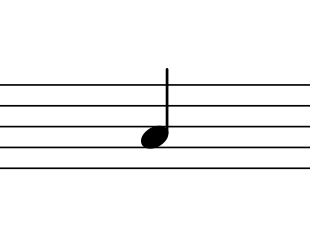
On the other hand, the high-sounding tom 1 is notated in the first blank from the top of the staff:
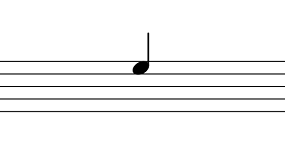
The middle tom is placed right under it, on the line:
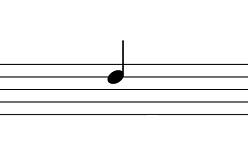
Can you see the pattern behind drum notes?
Generally high-sounding instruments are placed near the top of the staff. Deep sounding instruments are notated near its bottom.
The (Closed) Hi-Hat
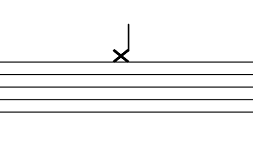
Besides the bass and snare drum, the closed hi-hat is one of our most often played instruments on the kit.
It’s also relatively high-sounding.
Therefore, we place the x standing for the hi-hit above the first line.
It can also be written directly on the line.
Please note:
If you open the hi-hat, you write it down differently:
Most of the time, you add a circle around the x.
However, you could also place the open hi-hat in the first blank space from the staff.
Personally, I prefer the circle as I put the high tom into the blank space.
The Ride Cymbal
Just like the hi-hat, the ride cymbal is a typical part of a standard drum set (not only) for beginners.
Using the notation program MuseScore, I like to write it down on the first line as this symbol:

It’s called Raute in German.
In English, I think it’s called rhombus.
(Please let me know whether I’m correct or not.)
However, you can also notate the ride as an x on or above the first line of the staff, depending on the placement of the hi-hat.
The Crash
Another important cymbal we need to take a look at is the crash cymbal.
It’s used for accents and is a crucial part of playing creative drum beats and fills.
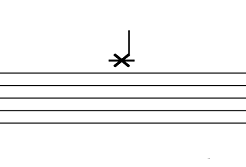
As you can see, the crash note is placed on an extra line added to the top of staff.
The crash cymbal is often notated with an additional circle around it as well.
Keep In Mind: Other Drum Notes Remain To Learn
Now we’re covered the basics of the drum notation for beginners.
You’ve learned how the notes for the
- kick,
- snare,
- toms
- and cymbals
can look like.
However, there are other sounds of the drum set including
- the side stick or rim click,
- bells like the cowbell or
- other cymbals, e. g. the splash or the note for the hi-hat pedal.
In addition to them, most notation programs offer an even larger variety of percussion instruments you can write down as sheet music.
As there can be A LOT of notes to choose from, this guide only contains the fundaments or basics of drum notes for beginners.
But I think it’s important to state that there’s more to learn. 🙂
The Key For Understanding Drums Sheet Music
Remember:
We don’t have a standard for writing down drum notes.
Keeping this in mind, you need to find a solution when learning to play the drums using
- different books,
- sheet music or
- online courses.
The good news is:
Almost each piece of educational literature has an explanation for their notes included.
That’s what you call the chart or sometimes key, in German it’s Legende or Schlagzeugnoten Erklärung.
Basically, the chart is a short overview of the drum notes like the one presented in this guide:
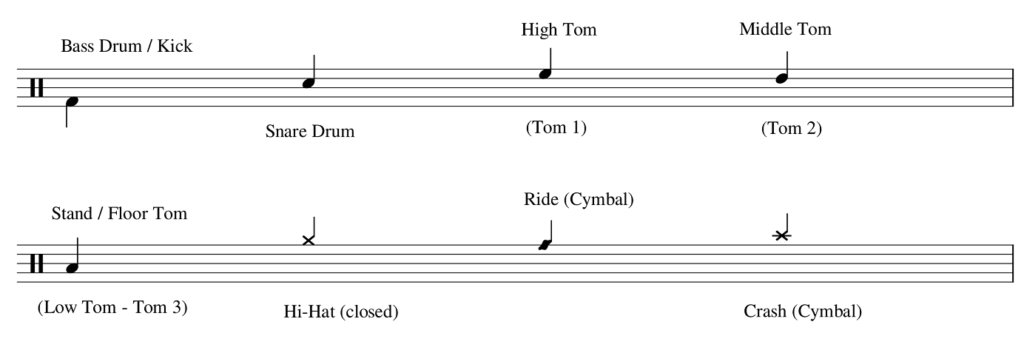
What Else Do You Need To Know About Drum Notes?
So far, we’ve talked about the look of basic drum notes for beginners.
However, there is more you should know about them.
Take a look at this piece of drums sheet music:

As you can see, this is a fun to play snare drum fill.
Nothing too complicated or complex going on.
Despite just playing the snare (and an eighth note rest right before the last stroke), each note looks different.
That’s because of the different note values.
They also impact how drum notes look like.
The head of the note stays the same this time, but it can also look different depending on the note value.
So, other parts of the music notes like the
- stem,
- flags and
- consequently barrings
can change, depending on what you’re going to play.
This is important to keep in mind, but thankfully, you will grab this concept naturally the more you use drum notes.
And Now, What’s The Next Step?
I’ve written this guide to help you learn and understand drum notes for beginners.
Hopefully, I could reach this goal.
Feel free to let me know in the comments below whether this guide helped you or not. 🙂
However, there’s one additional piece of advice I want to share with you now:
Understanding drum notes only is the first step.
You also need to take things to the kit.
Reading and learning about drum notes for beginners is great.
However, you will achieve the best results actually using your knowledge practically.
After all, you learn playing the drums by playing the drums.
To help you do so, make sure to check out my free drums sheet music.
You’ll also find drums sheet music in these guides:
Have fun and a great time applying your knowledge about drum notes for beginners to your kit!
Cheers,
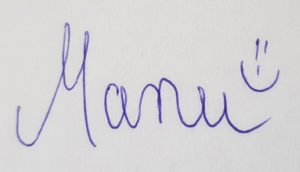

I wanna start reading on a high level
Hi Damien, sounds like a motivational goal to me. 🙂
All the best and thanks for sharing!
Manu